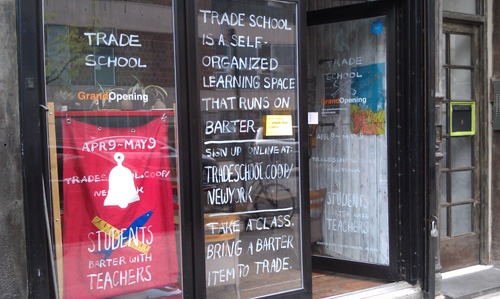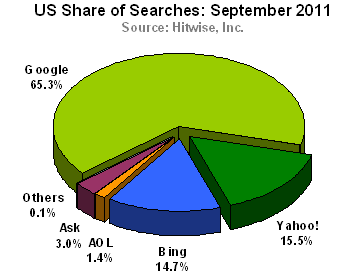get found
2012
This will be a practical overview of optimizing artist websites for search engines. We'll cover the best combination of code and writing that will pull you up from the depths of the internet. We'll take a good look at crediting your images. We'll discuss how to protect yourself against stolen content. This will be a workshop, so bring your laptop and your site and get ready to get found! Knowledge of HTML is required.

A quick guide to getting your site ready for search engines
Content
The most important thing you can do is make sure your pages have value by being interesting to read. Use descriptive writing and make sure any keywords you need are part of the content. Add new content! Search engines love new stuff. It will also help if your pages load quickly. Avoid hiding content on the page for search engines, they should be reading the same info as the visitors to your site.
Links
Make sure all your pages are linked in HTML, and that all your links are working. Browsers won't crawl links that were created in Flash or Javascript (see sitemaps). Tell people about your site! The more that other sites link to you, the more legit you will appear to the search engine.
Title
The < title > tag is the most important, make it descriptive for the various pages in your site. For instance, "My Site | About" for the About page.
Other Html Tags
Using semantic HTML is the most direct way to optimize your site for search engines.
< h1 > - make sure you have an < h1 > with the header for your content. Do not have more than one < h1 > tag on the page.
< h2 > - The search engine will read this as a more descriptive tag. Make all your important sub-headers into < h2 >.
< h3 > - This is for less important sub-headers.
< p > - Paragraph tags should be wrapped around all the content. These are also crawled as descriptive content.
< ul > - Use the list element for lists of information, like the navigation for your site.
Meta tags for content
meta description - This is important, it will show up as a description so someone scanning the search results might be more likely to click on you if it's well-written.
< meta name=" description " content="Short description for this page! "/ >
meta keywords - This doesn't matter for Google but Yahoo and Bing still use it. You have to guard against using too many keywords however, as people have been accused of "keyword stuffing." Try to use less than 10 and make sure they are words that actually show up in your content for that page.
< meta name=" keywords " content=" best, site, ever "/ >
Who wrote the content on your page:
< meta name=" author " content=" My Name " / >
Meta original-source - browser will know if you put the content up first and if someone stole it.
< meta name=" original-source " content=" http://www.myurl.com/best-project-ever/ "/ >
Protect your work with the copyright tag:
< meta name=" copyright " content=" 2012 My Name " / >
Images
Use alt text, image title, and have text around the image. This will make them more readable in an image search and also by screen readers.
< img src=" http://www.myurl.com/images/myimage.jpg " alt=" fantastic image " title=" fantastic image "/ >
Allow your image folder to be searchable (see robots.txt).
Don't use images for text, use real text so search engines can find it.
Flash
Make sure any important content in your flash movie is also available in the html.
Tag Pages on Blogs
If you have a blog, tag your content! Tag pages create another way for search engines to find your content through topics.
Avoid duplicate content
Make sure to test your site by doing this search in google: site:myurl.com
This will show all the pages in your domain that are indexed.
< link rel=' canonical ' href=' http://www.myurl.com/best-project-ever/ '/ >
A canonical link in the header of your page will additionally tell the search engine which is your preferred url.
Redirects
Make sure when you go to your site it is not redirecting to another domain. If you change the location of some pages, or the entire site, be sure to tell the search engines by putting a permanent (301) redirect in your htaccess file.
Sitemaps
A sitemap is an xml file that outlines all the links in your site. This is helpful for search engines if you have pages that aren't linked, or are linked dynamically through javascript or flash. You can also have a link to an html sitemap in the footer of your page. This helps screen readers find an easy way to navigate your site.
robots.txt
Create a text file named robots.txt to tell search engines which folders are okay for them to crawl. You can specify that they're not ok, or that internet archives can't copy directories. Also you'll point to your sitemap in this file.
User-agent: *
Disallow: /stats
Disallow: /*.html$
Disallow: /webformmailer.php
Sitemap: http://www.myurl.com/sitemap.xml
User-agent: duggmirror
Disallow: /
User-agent: ia_archiver
Disallow: /
User-agent: Googlebot-Image
Disallow:
Allow: /*
Let bots crawl a particular page
< meta name=" googlebot " content=" index,noarchive,follow,noodp "/ >
< meta name=" robots " content=" all,index,follow "/ >
< meta name=" msnbot " content=" all,index,follow "/ >
Or not-
< meta name=" robots " content=" noindex,nofollow "/ >
Custom urls
Blogs and other dynamic sites use a query string in the url of the page, which comes after a question mark (?): http://www.myurl.com/?page=256
Search engines will not read anything after the question mark. So it's best to set up custom urls instead which are readable by both humans and computers: http://www.myurl.com/best-project-ever/
This can be done with rewrite rules in the htaccess file, or your blog platform may have an option to do that when you make a post.
More resources
- SEO Site Checkup
- Google Webmaster Guidelines
- Yahoo Style Guide
- 15 minute search engine optimization list

Thanks to: Trade School NY